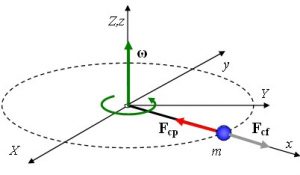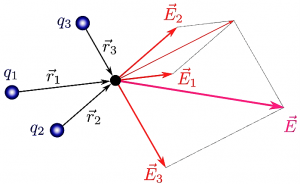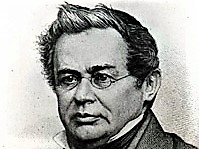Coriolis effect
In physics and meteorology, the study of the Coriolis effect is very important in order to better understand which forces intervene in Earth's rotational motion and what effect they produce depending on their planet location.

Related topics
Ocean current, trade winds
What is the Coriolis effect?
The Coriolis effect is a force generated by the rotational motion of the Earth in space. It diverts the trajectory of objects moving on the Earth's surface, either to the right if they are in the northern hemisphere or to the left, if they are in the southern hemisphere. It is also known as the Coriolis force. The Coriolis force has two components, one tangential and the other radial, related to the movement of a body. The symbol of the Coriolis force is Fc.
The Coriolis effect is a force that acts on air masses and water in our ecosystem, as well as on objects that are thrown in a trajectory by water or air. This effect also explains the formation and displacement of hurricanes, cyclones and tornadoes in the northern and southern hemispheres, helping us to prevent the consequences that these phenomena may have on nature.
About the Coriolis effect
The Coriolis effect or Coriolis force is a natural phenomenon that occurs because of planet rotation, where objects thrown or projected in a straight direction deviate their trajectory to the left or right depending on the hemisphere in which they are. This explains why the air masses move in one direction, creating storms that turn in one direction in the northern hemisphere and to the opposite side in the southern hemisphere.
Discoverer
Gaspard-Gustave of Coriolis was the engineer and mathematician who discovered the Coriolis effect. Of French origin, Gaspard-Gustave was born in Paris in 1792.
He was professor of geometric analysis and general mechanics at the Central School of Arts and Manufacturing. During his life, he developed many researches related to the differential equations of rotational motion, mechanical power and kinetic energy. He published many of his articles in the Industry Dictionary.
Gaspard-Gustave de Coriolis dies in Paris on September 19, 1843.
Coriolis effect history
The Coriolis effect was first described in 1835 by the French mathematician and engineer Gaspard-Gustave de Coriolis in his article on the equations of relative motion of body systems. The Coriolis effect was presented in the article as a centrifugal force of a moving body relative to a rotating reference system. His research is based on the analysis of potential energy and Kinetic in rotating systems.
The term is introduced in meteorological and oceanographic literature at the end of the nineteenth century and in the following twentieth century, this effect is known as Coriolis force.
Uses
The Coriolis effect is present in the environment constantly and that is why the knowledge of this force helps us to understand some natural phenomena. Next, some cases will be presented where this Effect is evident.
- In the ocean, Coriolis effect acts to make currents not parallel to the wind, but at an angle with it.
- When moving icebergs, the Coriolis effect directs their trajectory to the right or to the left depending on the hemisphere in which they are located.
- In the atmosphere, Coriolis effect affects cloud formation and winds, creating storms.
- The Coriolis force acts on the mass flow-meter, a device that measures the mass flow of a fluid, creating a force in the tube perpendicular to both directions. This allows the vibration and direction of the current to be measured.
Examples
Below are two examples where evidence can be given of how the Coriolis effect works and its importance. The first is related to ballistics and the second to the direction of water in the hemispheres and in Ecuador.
Coriolis effect on ballistics
As mentioned above, the Coriolis effect or force acts on moving entities as well as on water and air masses that move around the planet. In the field of ballistics, projectiles are also affected by the Coriolis effect depending on how far the projectile has to travel to its target. In this sense, if the distances to be covered by a bullet are short, the bullet will come out in a straight line and its deviation will not be significant in relation to a projectile fired by a sniper one kilometer away; or even more, if we are referring to a missile launched to cover many kilometers before reaching its target. If this missile is launched from the northern hemisphere, it will have an inclination to the right, and if it is in the southern hemisphere, to the left.
This also happens in aviation. A plane departing for its destination in a straight line will be affected by Coriolis force. In this sense, it has to go periodically adjusting its course depending on the orientation given by this force.
Coriolis effect in water
The case of water and its way of turning when falling down a drain is an example of the Coriolis effect. In the northern hemisphere, water rotates clockwise and in the southern hemisphere, it rotates counterclockwise. It is important to mention that on the Equator line there is no Coriolis effect and, therefore, water at that point descends without turning. It is for this reason that in Ecuador there are no hurricanes, nor cyclones, because there are no such turns of the masses of water or air.
How to cite this article?
Briceño V., Gabriela. (2019). Coriolis effect. Recovered on 4 January, 2025, de Euston96: https://www.euston96.com/en/coriolis-effect/









